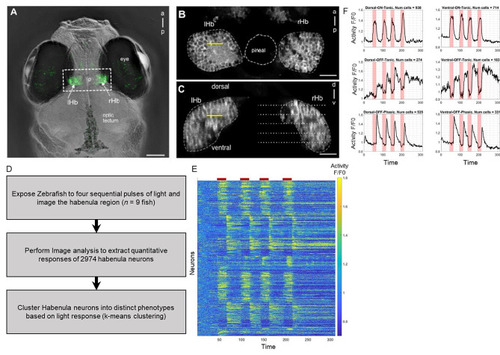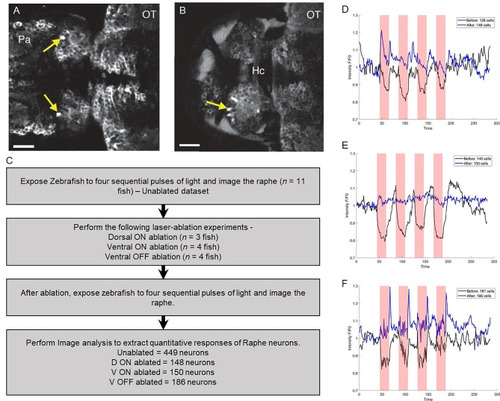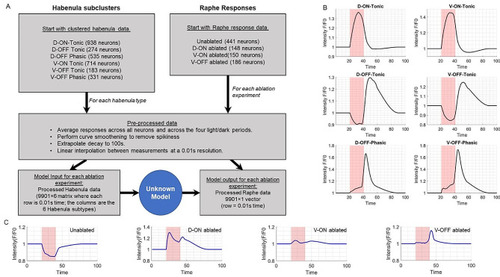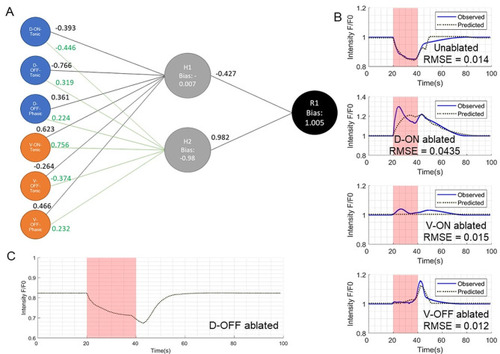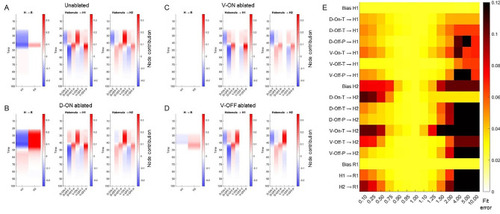- Title
-
Computational modeling of light processing in the habenula and dorsal raphe based on laser ablation of functionally-defined cells
- Authors
- Cheng, R.K., Jagannathan, N.S., Kathrada, A.I., Jesuthasan, S., Tucker-Kellogg, L.
- Source
- Full text @ BMC Neurosci.
|
The habenula has multiple subtypes of cells that show differential response to light. ( |
|
The effects of lesioning specific cells in the habenula on raphe response to irradiance change. ( |
|
Characteristic responses of habenula and raphe to one light-dark cycle. ( |
|
Neural network model and estimated raphe behavior. ( |
|
Contributions of each neural network node to the Raphe response. ( |

